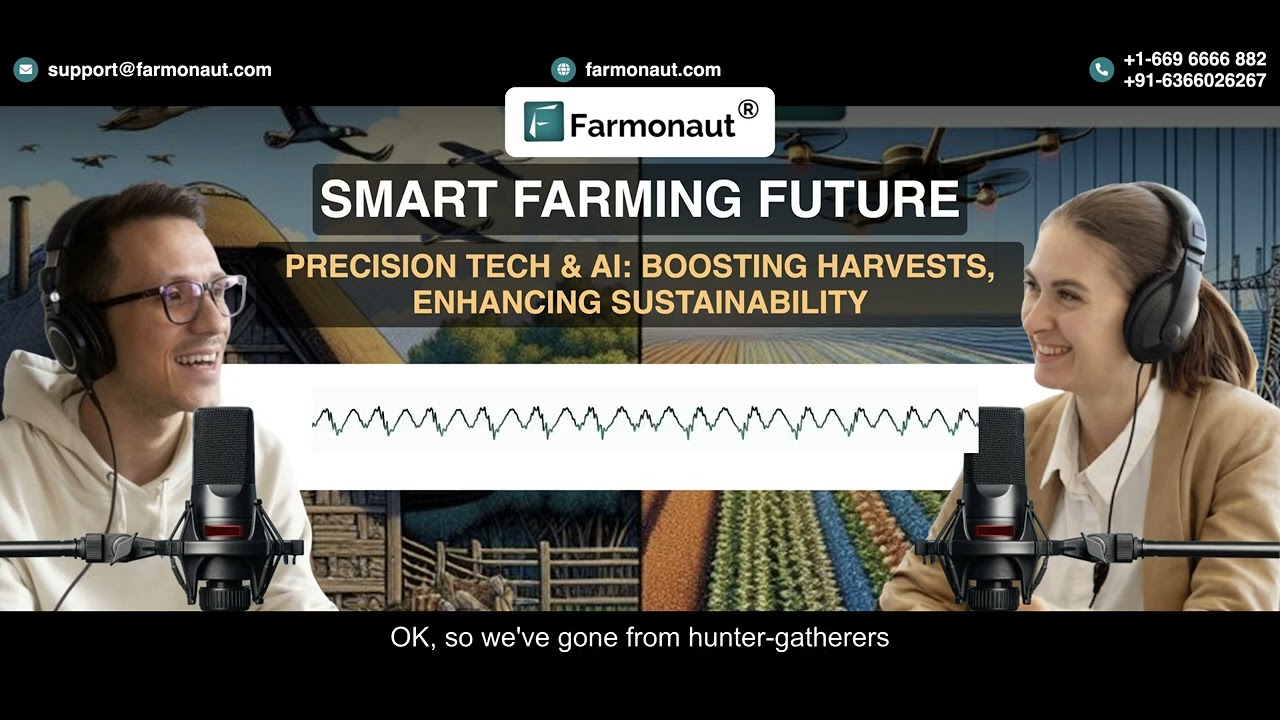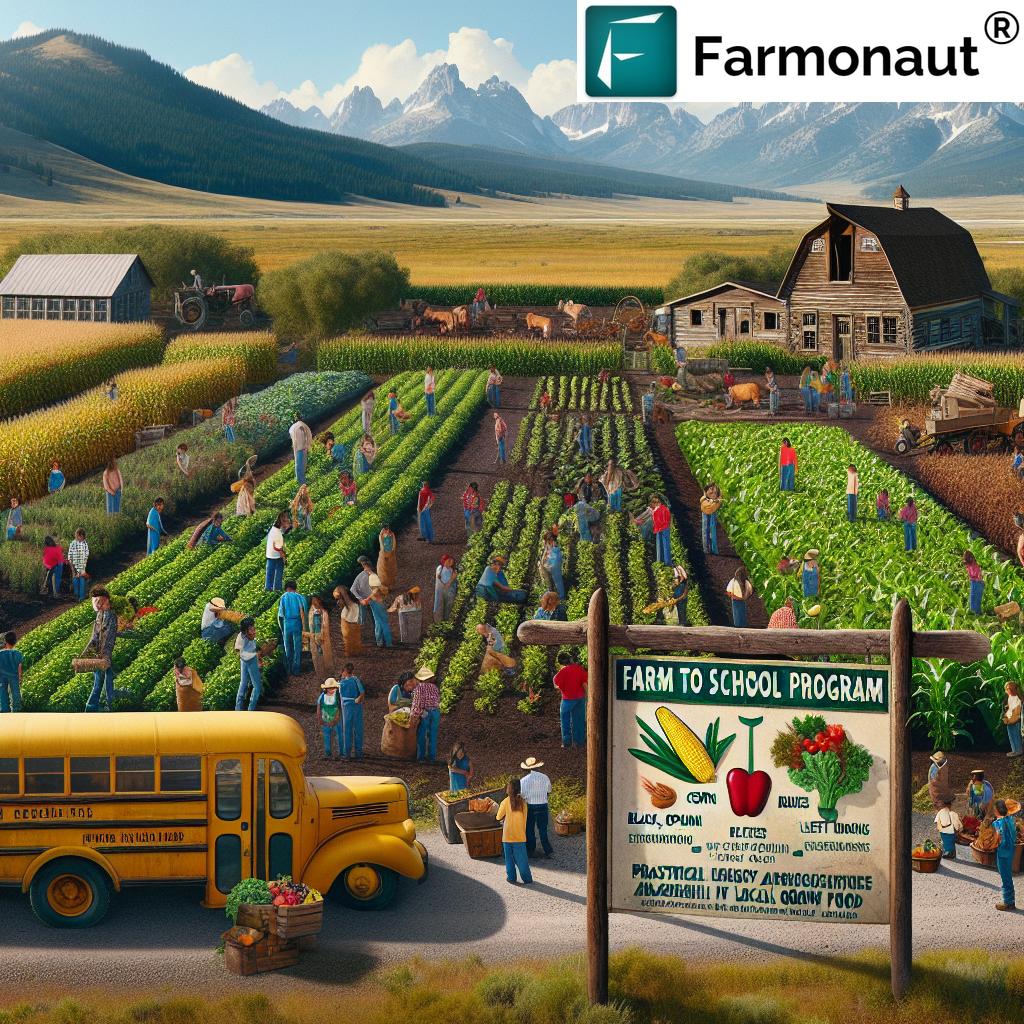Farmer Group & Ranch Insurance: 2026 Essential Policies
“By 2025, over 60% of small farms are expected to adopt group insurance policies for broader asset coverage.”
The Agricultural Insurance Landscape: 2025 & Beyond
As the global agricultural landscape continues to evolve in 2025 and 2026, one aspect remains crucial for farmers, ranchers, and rural communities: robust insurance solutions. With climate change accelerating the unpredictability of weather patterns, new threats like crop failures, livestock disease outbreaks, equipment damage, and natural disasters now pose an ever-present risk to every farm operation.
The answer for many in the sector comes from a blend of tailored insurance products—namely:
- Farmer group insurance
- Farmer union insurance
- Farm ranch insurance
- Farm tractor insurance
- Small farm insurance
- Dairy farm insurance
Together, these comprehensive agricultural insurance solutions are indispensable in providing financial safeguards, protecting both the assets and the economic stability of global farmers.
Why Is Comprehensive Farm Insurance Essential for 2026?
The past decade has demonstrated—sometimes tragically—that farmers and ranchers face an array of inherent risks, with the potential for significant financial setbacks. The economic consequence of a single natural disaster, widespread disease outbreak, or theft of vital equipment can be devastating and long-lasting.
By 2026, farm insurance is not an optional safety net but an integral part of agricultural management. Insurance policies now offer:
- Tailored coverage for assets, infrastructure, and livestock
- Group and union-based risk pooling for affordable premiums
- Access to tech-driven claims processes and disaster recovery advisory
- Inclusive products for smallholders and commercial-scale operators alike
- Coverage integrating precision ag data, climate modeling, and risk analysis tools
The Importance of Farmer Group Insurance & Union Policies
Farmer group insurance and farmer union insurance have emerged as powerful risk-mitigating mechanisms in 2025 and beyond. In regions where individual farmers may struggle to afford standalone coverage, these collective insurance models offer a vital lifeline.
How Group and Union Insurance Models Work
- Farmers pool resources and premiums through formal groups, unions, cooperatives, or community organizations.
- Collective bargaining power is leveraged to obtain affordable, comprehensive, and locally tailored policies.
- This approach lowers individual costs, simplifies claims (with group assistance), and enhances access to targeted risk management solutions.
- Government subsidies and incentives increasingly support participation, making these models a cornerstone of rural resilience.
Why Is Group Insurance So Impactful?
- Simplifies insurance procurement and claims processes for members.
- Encourages insurance uptake among marginalized, small, and vulnerable farmers globally.
- Policies are often tailored to unique local agricultural conditions, crops, and threats.
- Enables sustainable agricultural productivity and improved economic security for farm communities.
For those managing multi-farm or collective operations, having group or union insurance coverage ensures that even in the event of a severe disaster, disease outbreak, or equipment damage, recovery is swift, collaborative, and financially supported.
For organizations or insurance providers seeking to digitize and streamline their farm insurance processes, Farmonaut’s satellite data API offers seamless integration of real-time monitoring and verification solutions. This aids in transparent claims verification, improving efficiency and reducing fraud risk. For technical integration details, please see Farmonaut’s API Developer Docs.
Farm Ranch & Dairy Farm Insurance: Safeguarding Livelihoods
Farm ranch insurance and dairy farm insurance are designed to extend protection beyond crops, addressing the entire spectrum of risks that ranchers and dairy operators face. Let’s break down what comprehensive coverage in these two major segments involves:
Understanding Farm Ranch Insurance Coverage
- Livestock coverage: From cattle to sheep, insurance covers animal diseases, theft, injury, and losses from natural disasters.
- Equipment and facilities: Includes barns, fencing, feed storage, tractors, and other essential farm infrastructure.
- Events and disasters: Covers fire, flooding, storms, and other extreme weather conditions.
- Liability protection: For injuries, property damage, or lawsuits arising from ranch operations.
Such comprehensive farm insurance policies help ranchers recover swiftly from setbacks, sustaining livelihoods and rural economic stability.
Dairy Farm Insurance: Tailored Asset Protection
- Livestock (dairy animals): Covers both disease outbreaks (like mastitis or FMD) and accidental loss.
- Milk yield protection: Policies may include insurance for lost income due to decreased production, especially during disease or supply chain interruptions.
- Specialized equipment: Milking machines, refrigeration, and storage tanks often covered for breakdown and damage.
- Product contamination or recalls: Modern dairy insurance covers liability in case of unsellable or contaminated product batches.
“Ranch insurance uptake is projected to rise by 18% in 2026, reflecting changing industry risk management trends.”
Benefits of Dairy and Ranch Insurance for Communities
- Promotes continuity for large and small dairy operations in the face of disease or supply chain failures
- Offers peace of mind and economic resilience in volatile supply and price conditions
- Improves food security by enabling recovery and ongoing production after disasters
The comprehensive approach found in farm ranch and dairy farm insurance policies is crucial for protecting assets and livelihoods, particularly amid increasing climate risks and disease emergence.
Recommended Read: Farmonaut’s Crop Loan & Insurance Services
Did you know? Farmonaut provides satellite-based verification for crop loans and farm insurance claims, allowing rapid, fraud-resistant settlements that support farmers’ resilience and speedy recovery post-disaster.
Farm Tractor Insurance: Essential Protection for 2026
Tractors are fundamental assets to any modern farm operation. The expense involved in owning, maintaining, or replacing even a single tractor is significant. For 2026, farm tractor insurance continues to evolve, embracing technology and data-driven innovations.
- Physical damage: Coverage for accidents, fire, theft, and weather-induced losses (hail, lightning).
- Malfunction & breakdown: Modern insurance is now incubating telematics technology (monitoring usage, alerts for maintenance) to proactively prevent equipment failure and reduce claims frequency.
- Liability coverage: Essential in accidents involving farm equipment, protecting against personal injury claims or property damage.
Telematics-driven policies (increasingly available in 2026) allow real-time remote monitoring—whether through aftermarket devices or integration via platforms like Farmonaut, offering actionable data for better risk management and safer machinery utilization.
Explore Advanced Fleet Management with Farmonaut
Farmonaut’s Fleet & Resource Management tools empower efficient monitoring and utilization of tractors, vehicles, and equipment. Our solution helps reduce operational costs, improve scheduling, and ensure timely maintenance—all via satellite and AI-driven insights.
Small Farm Insurance: Coverage for the Backbone of Agriculture
Small farm insurance is specifically crafted to meet the unique needs of smallholdings and diversified family farms, especially in regions where access to traditional products may be limited or unaffordable.
- Flexible, affordable premiums based on the size, crop diversity, and operational structure of the farm.
- Comprehensive risk management solutions for mixed-use (crops + livestock) or specialized systems.
- Digital and mobile platforms that facilitate microinsurance—quick to purchase and manage, with fast claims settlement for localized events (like drought or pest outbreaks).
- Support and advisory services increasingly offered alongside insurance, promoting risk awareness and financial literacy among smallholders.
By 2026, digital transformation makes small farm insurance both accessible and responsive, reducing the vulnerability of small-scale farmers to weather, natural disasters, or disease outbreaks.
Tip: Monitor Crop Risks in Real-Time
Small farmers can now benefit from large-scale farm management apps such as Farmonaut, which enable real-time tracking of crop health (NDVI/biomass), soil moisture, and disease risk. These tools inform better insurance decisions and proactive intervention against losses.
Current & Emerging Agricultural Insurance Trends
As we move toward 2026, the trends shaping farmer group insurance, farm ranch insurance, and small farm insurance are characterized by technology adoption, digitalization, and policy innovation:
- Telematics and IoT integration: From tractors to irrigation systems, connected devices enable real-time risk monitoring, predictive maintenance, and automated claim validation.
- Data-driven underwriting: Historical weather data, remote sensing (satellite imagery), and climate modeling now inform premium calculations and risk classifications.
-
Blockchain traceability: Prevents insurance fraud and ensures transparent supply chains—this is especially relevant for international agricultural exports.
For businesses prioritizing authenticity and traceability, Farmonaut’s Blockchain Traceability Solutions deliver supply chain transparency and integrity.
- Microinsurance and digital onboarding: Enabling quick, low-cost policy purchases via mobile apps, reaching underinsured populations in rural and remote regions.
- Parametric insurance: Automated payouts based on satellite-observed triggers (e.g., rainfall, temperature, or NDVI deviation) for speedy relief during droughts or floods.
- Government and multilateral support schemes: Increasingly, governments work to subsidize premiums, offer education, and encourage insurance adoption to achieve long-term rural stability and food security.
Comparative Trends Table: Farm Insurance Market 2025-2026
| Insurance Type | Estimated 2025 Market Share (%) | Expected Growth Rate (2025-2026, %) | Key Coverage Innovations | Notable Providers (2025/2026) |
|---|---|---|---|---|
| Farmer Group Insurance | 34% | 12% | Group risk pooling, digital onboarding, parametric triggers, government-subsidized premiums | AgriGuard, GroupSafe, RuralProtect, National Insurers |
| Farmer Union Insurance | 18% | 10% | Union-negotiated premium rates, peer-reviewed claims, localized risk coverage | Union Mutual, UnitedAg, FarmCollective |
| Farm Ranch Insurance | 25% | 18% | Livestock disease coverage, infrastructure protection, telematics-enabled liability | AgRanch Insurance, SecureRanches |
| Farm Tractor Insurance | 8% | 15% | IoT/telematics risk assessment, machinery maintenance linking, theft tracking | MachinerySecure, TractorSure |
| Small Farm Insurance | 10% | 25% | Microinsurance, digital/mobile policy access, climate/event-based instant payout | MicroProtect, SmallAgriSafe |
| Dairy Farm Insurance | 5% | 13% | Yield-linked income cover, contamination/loss recalls, supply chain integration | DairyGuard, MilkSecure |
Innovations & the Role of Technology in Insurance (Farmonaut’s Contribution)
The future of agricultural insurance will be shaped by ongoing digital innovation, intelligent data use, and affordable tech access. Platforms like Farmonaut are enabling essential transformation by:
- Satellite-based remote sensing: Real-time monitoring of crop health, field conditions, and potential losses forms the data backbone for parametric insurance and efficient claims validation.
- AI-driven risk advisory: Our Jeevn AI Advisory System processes multi-layered data to provide actionable recommendations for both routine management and disaster scenarios.
- Blockchain-based traceability: Secure verification for insurance payouts & supply chains—fundamental for both transparency and food safety.
- Environmental impact & carbon monitoring: Track, report, and certify sustainable practices using our carbon footprinting tools. Such certification is becoming integral to many insurance rebate and subsidy schemes.
- Subscription-based accessibility: Our satellite, AI, and resource management technology is available on affordable, scalable subscription plans for individuals, businesses, and institutions.
How to Choose the Right Farm Insurance in 2026
- Assess your unique risk profile: Identify whether you are a smallholder, group member, rancher, or dairy operator and determine the specific risks (crops, livestock, equipment, climate events) your operation faces.
- Prioritize comprehensive policies: Ensure your policy covers all critical assets, income streams, and liabilities.
- Investigate group/union coverage: If eligible, join a cooperative or union to access lower premiums and collective claim support.
- Check provider reputation: Verify claim settlement rates, transparency, customer support, and digital service availability.
- Leverage technology platforms: Use digital tools (like our AI and satellite-enabled applications) for real-time risk monitoring, historical data analysis, and efficient claims verification.
- Review innovation features: Does the policy offer telematics, blockchain, or microinsurance options?
- Explore available subsidies & support: Some governments offer rebates or incentives for certain policy types—do your research to maximize value.
By 2026, the best insurance decisions will be data-driven and tailored to every farm’s unique context.
Frequently Asked Questions (FAQ)
What’s the difference between individual farm insurance and group/union insurance?
Individual farm insurance covers risks specific to one farm, often with higher premiums and less bargaining power. Farmer group insurance or farmer union insurance pools multiple farms, enabling affordable rates, easier admin, and better tailored risk coverage. Group models may also receive government support in many regions.
Which risks are covered under farm ranch insurance?
Farm ranch insurance extends coverage beyond crops to include livestock disease, theft, fire, weather disasters, infrastructure damage, and liability protection. It provides support for swift recovery from a wide range of unforeseen farm and ranch operational risks.
Is farm tractor insurance mandatory?
While not always legally required, farm tractor insurance is crucial for asset protection, especially considering the high value of modern tractors and the rise of telematics-based policies in 2026. Many lenders and group schemes now require it for coverage eligibility.
How is small farm insurance different from larger farm insurance products?
Small farm insurance typically offers flexible premiums, optional microinsurance, and policies adapted for mixed-use or diversified operations. Coverage and settlement mechanisms are simplified to suit the needs of smallholders and rural, digitally connected communities.
How do technologies like satellite imagery and AI improve agricultural insurance?
Satellite and AI enable real-time crop condition monitoring, support parametric insurance (triggered by observed events), automate claims verification, and assist insurers in pricing coverage accurately. Digital tools like those offered by Farmonaut reduce fraud, speed up payouts, and empower farmers with timely risk insights.
What app-based insurance tools are available for farmers in 2026?
A growing number of insurance providers now offer policy management, claim submission, and real-time advisory through mobile platforms. Explore Farmonaut’s web and mobile apps for satellite monitoring, resource tracking, and more.
Conclusion & The Road Ahead
By 2026, farmer group insurance, farm ranch insurance, dairy coverage, tractor, and small farm insurance policies enable agricultural communities to thrive amid uncertainty. Evolving insurance models, powered by technology and supported by governments and unions, will anchor rural economic stability in the face of growing risks—from extreme weather and market volatility to disease outbreaks and equipment loss.
For every farmer seeking to safeguard their assets and livelihoods, the path forward lies in leveraging affordable, comprehensive, and technology-backed insurance solutions. The latest digital and satellite platforms—including those provided by Farmonaut—bring greater transparency, ease of use, and quick support to the heart of farming communities, helping them sustain productivity and security well into the future.
Discover the power of technology-driven insurance and resource management for the most resilient 2026 farm possible—no matter your scale, location, or agricultural focus.
- Learn about large-scale and corporate farm management solutions for insurance, compliance, and operational excellence.
- Explore advisory tools to reduce risk and maximize productivity.
Stay secure, informed, and innovative—embrace the future of farm insurance today.



















